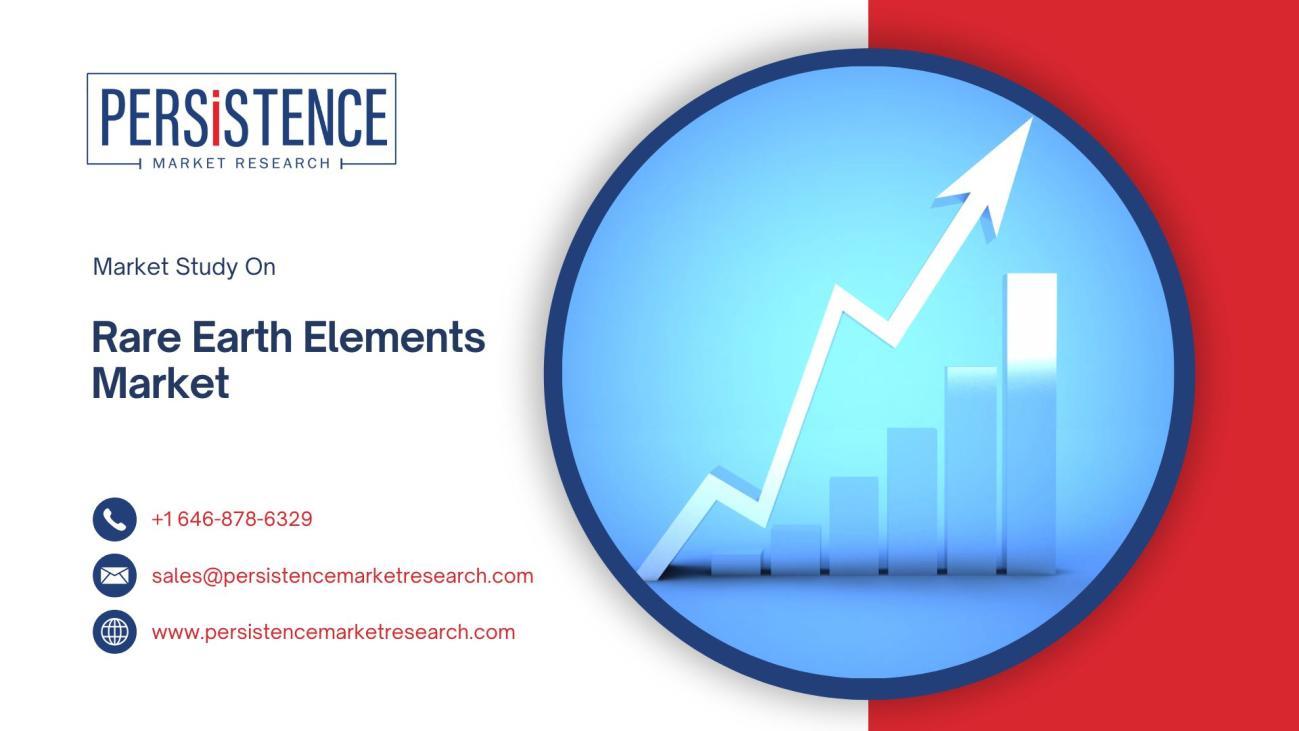Why Investors Are Focusing on the Rare Earth Elements Market in 2025–2032
Rare earth elements (REEs) have become pivotal in the technological and energy sectors, driving significant interest from investors worldwide. According to Persistence Market Research, the global rare earth elements market is projected to grow at a compound annual growth rate (CAGR) of 10.6% between 2025 and 2032, expanding from US$ 7.2 billion in 2025 to US$ 14.7 billion by 2032. This anticipated growth underscores the increasing demand for REEs and highlights the lucrative opportunities for investors in the coming years.
Understanding Rare Earth Elements
Rare earth elements comprise 17 chemically similar elements, including the 15 lanthanides, along with scandium and yttrium. Despite their name, these elements are relatively abundant in the Earth's crust but are often found in low concentrations, making their extraction and processing both challenging and costly. REEs possess unique electronic and magnetic properties, rendering them indispensable in various high-tech applications.
Driving Factors for Market Growth
Several key factors are propelling the growth of the rare earth elements market:
Technological Advancements
Modern technologies heavily rely on REEs for their unique properties. For instance, neodymium and dysprosium are essential in manufacturing high-strength permanent magnets used in consumer electronics, wind turbines, and electric vehicle (EV) motors. With over 5.4 billion people worldwide using mobile devices, the demand for these elements has surged significantly
Shift Toward Renewable Energy
The global push for renewable energy sources has amplified the need for REEs. Wind turbines, for example, utilize rare earth magnets in their generators to enhance efficiency. The Global Wind Energy Council reported a 93 GW increase in global wind capacity in 2022, further driving the demand for REEs.
Electric and Hybrid Vehicles
The automotive industry's transition to electric and hybrid vehicles has significantly increased the demand for REEs. Motors in EVs rely on rare earth magnets for their efficiency and durability. The International Energy Agency estimated that EV sales surpassed 10 million units in 2022, with each EV containing about 2.5 kg of rare earth materials.
Regional Market Dynamics
Asia Pacific
In 2024, Asia Pacific dominated the demand for rare earth elements, led by China, which accounts for more than 70% of global demand. China is also the largest supplier and consumer of rare earth magnets, followed by Japan in the region. China is set to maintain its 50% share in global New Energy Vehicle (NEV) sales by 2032, wherein rare earth-based permanent magnet electric motors are a critical component.
Europe
Europe's high demand for rare earths is encouraging domestic resource development. Germany, France, and the U.K. are the region's largest markets for rare earth elements, primarily targeting catalysts, metallurgy, and magnets. Countries like Sweden, Finland, Norway, and Spain are planning to invest in the rare earth value chain to reduce reliance on imports. For instance, Sweden's LKAB announced the start of a new rare earth oxides project in Lulea with an initial investment of US$ 73 million, expected to be operational by 2026.
North America
The North American rare earth elements market is estimated to be valued at US$ 300 million by 2032, with robust growth anticipated between 2025 and 2032. The U.S. and Canada have substantial rare earth reserves; however, complex separation and refining processes pose economic challenges. In the U.S., MP Materials owns the sole rare earth elements mine, accounting for approximately 2.3 million metric tons of proven reserves. Despite this, the U.S. heavily relies on imports, with nearly 78% sourced from China.
Investment Opportunities and Challenges
The burgeoning demand for REEs presents numerous investment opportunities, particularly in mining, processing, and recycling sectors. However, investors must navigate several challenges
Geopolitical Risks: China's dominance in the REE supply chain and its use of REEs as a strategic resource have raised supply concerns for nations like the U.S. and EU.
Environmental Concerns: The extraction and processing of REEs can have significant environmental impacts, leading to stringent regulations and potential operational hurdles.
Price Volatility: Geopolitical factors and supply-demand imbalances can lead to significant price fluctuations, potentially deterring investment in rare earth element projects.
Conclusion
The rare earth elements market is poised for substantial growth from 2025 to 2032, driven by technological advancements, the shift toward renewable energy, and the rise of electric vehicles. While the market presents lucrative opportunities for investors, it is essential to consider the associated challenges, including geopolitical risks, environmental concerns, and price volatility. Strategic investments and collaborations, along with advancements in extraction and recycling technologies, will be crucial in navigating this dynamic market landscape.

